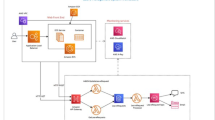Abstract
A large number of technologies are used in a satellite because it is hard difficult to repair and replace its components after it has been launched. Furthermore, there are many threats to the satellite such as software aging, environmental problems and network attacks. Because of this nature, it is important that the satellite operates well in spite of the occurrence of hardware and/or software faults. In particular, software aging in the on-board computer (OBC) causes unavailability of a whole satellite system. In this paper, we propose to adopt software rejuvenation for OBC in conjunction with cold, hot and warm standby redundancy in a satellite system. We use stochastic reward nets (SRN) to model OBC with cold, hot and warm standby redundancy and model OBC with that redundancy with software rejuvenation. We compare the models in terms of steady state availability and downtime cost. Sensitivity analysis with respect to some parameters is used to find bottlenecks of the models. Finally, we present a reliability model and analysis with cost consideration.
Similar content being viewed by others
References
V. Lakshminarayana, B. Karthikeyan, V. K. Hariharan, N. D. Ghatpande and T. L. Danabalan, Impact of space weather on spacecraft, Proc. of the 10 th Int. Conf. on Electromagnetic Interference & Compatibility, India (2008) 481–486.
K. Poulsen, Satellites at risk of hacks, Security Focus, (2002) http://www.securityfocus.com/news/942.
Y. Huang, C. Kintala, N. Kolettis and N. D. Fulton, Software rejuvenation: Analysis, module and applications, Proc. of the 25 th IEEE Int. Symp. on Fault-Tolerant Computing, USA (1995) 381–390.
G. Ciardo, J. Muppala and K. S. Trivedi, SPNP: stochastic Petri net package, Proc. of the 3 rd Int. Workshop on Petri Nets and Performance Models, Japan (1989) 142–151.
C. Constazltinescu and K. Trivedi, A stochastic reward net model for dependability analysis of real-time computing systems, Proc. of the IEEE Workshop on Real-Time Applications, USA (1994) 142–146.
K. S. Trivedi, SPNP User’s Manual, Duke University, (1999) http://www.ee.duke.edu/~chirel/MANUAL/SPNPv6-manual.ps.
S. J. Lee, J. H. Ryu, J. Y. Park, S. K. Jeong, H. J. Woo, Y-H Cho and J-H Won, Design of on-board computer for geostationary earth orbit spacecraft, Proc. of 2009 Conf. of The Korean Society for Aeronautical & Space Sciences, Korea (2009) 990–993.
P. Ramanathan, K. G. Shin and R. W. Butler, Fault-tolerant clock synchronization in distributed systems, Computer, 23(10) (1990) 33–42.
G. J. Knafl and J. A. Morgan, Modeling space shuttle software failures at varying criticality levels, Proc. of 1998 IEEE Aerospace Conf., USA (1998) 105–113.
J. H. Saleh, Flawed metrics: Satellite cost per transponder and cost per day, IEEE Trans. on Aerospace and Electronic Systems, 44(1) (2008) 147–156.
Author information
Authors and Affiliations
Corresponding author
Additional information
Recommended by Guest Editor Dong-Ho Bae
Dong Seong Kim received his B.S. degrees in Electronic Engineering from Korea Aerospace University, Republic of Korea in 2001. Then he received his M.S. degrees and Ph.D in Computer Engineering from Korea Aerospace University, Republic of Korea in 2003, 2008, respectively. Then he worked as a visiting researcher in University of Maryland at College Park, USA in 2007. He was a postdoctoral researcher in Duke University, Durham, NC, USA from June 2008 to July 2011. He is currently a lecturer (assistant professor in North America system) in Computer Science and Software Engineering Department at the University of Canterbury, Christchurch, New Zealand since August 2011. His research interests are in dependable and secure systems and networks. In particular, dependability of satellites, intrusion detection systems, security for wireless ad hoc and sensor networks, virtualization, and cloud computing systems.
Rights and permissions
About this article
Cite this article
Kim, D.S., Lee, S.M., Jung, JH. et al. Reliability and availability analysis for an on board computer in a satellite system using standby redundancy and rejuvenation. J Mech Sci Technol 26, 2059–2063 (2012). https://doi.org/10.1007/s12206-012-0512-6
Received:
Revised:
Accepted:
Published:
Issue Date:
DOI: https://doi.org/10.1007/s12206-012-0512-6




